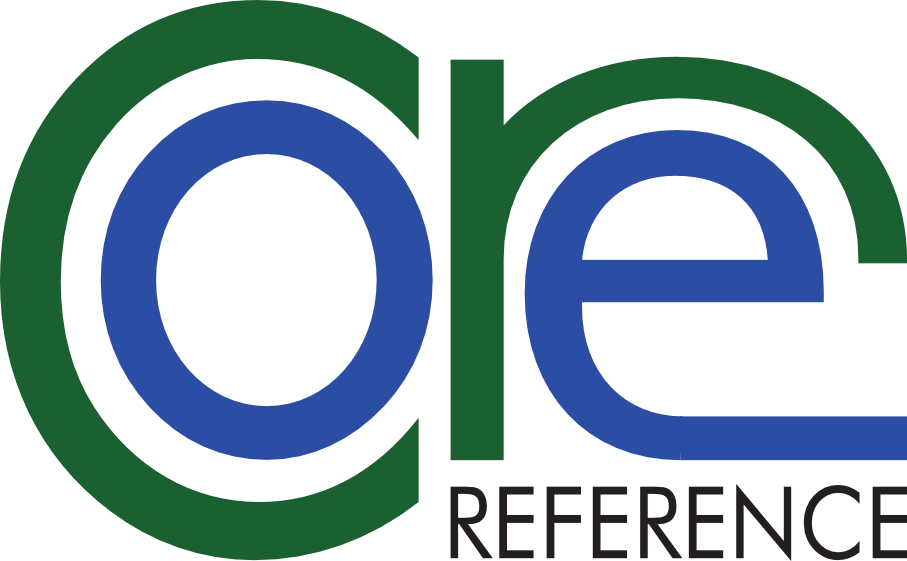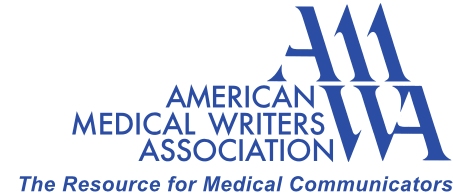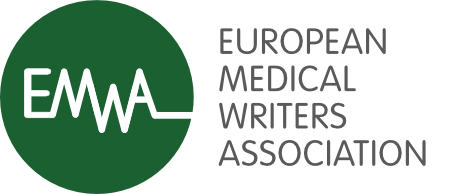December 2021
Let’s begin this December 2021 summary with a ‘thank you’ to so many readers for acknowledging the value that the ‘CORE Reference News Summaries’ add to the trial reporting and public disclosure learning environment. This would not be possible but for the regular content contributors who help keep this ‘pro bono’ endeavour on the road.
I’d also like to give a special mention to our medical devices expert, Raquel Billiones, for bringing the new dimension of devices transparency and disclosure to the CORE Reference project in 2021, and for providing such well-researched monthly updates.
Wishing you all a peaceful and healthy 2021 holiday season, and success and happiness in 2022. CORE Reference updates will be back in the New Year.
Sam Hamilton (Chair)
Medicines and Vaccines
EMA Guidance and News
- EMA updates on centralized procedure have been made in November 2021. Questions and answers are being updated continuously and will be marked by “NEW” or “Rev.” with the relevant date upon publication.
- On 28 October 2021, the European Parliament and Council provisionally agreed to make the EMA more effective in tackling shortages of medicines and medical devices, by setting up separate Medicines and Devices Shortages Steering Groups. The groups will manage the shortages and provide public information. During a public health emergency, sponsors of EU trials will be required to make the trial protocol publicly available in the EU Clinical Trials Register at the start of the trial, as well as a summary of the results. When a product is granted an MA, the EMA will publish product information with details of the conditions of use and clinical data received (using anonymised personal data and no commercially confidential information). The agreement will come into force following endorsement by the European Parliament and Council.
Real World Evidence
- On 24 Nov 2021, EMA published their vision for the use of RWE in medicines regulation in the EU.
- This paper published in ‘Clinical Pharmacology and Therapeutics’ titled ‘Marketing Authorization Applications Made to the European Medicines Agency in 2018–2019: What was the Contribution of Real-World Evidence?’ shows the potential for growth in the contribution of RWE to recent MAAs.
- This perspective paper published in the same journal titled ‘Real-World Evidence in EU Medicines Regulation: Enabling Use and Establishing Value’ anticipates that RWE will have high(er) and tangible regulatory value by 2025.
- Watch the 07 December 2021 live event: 2nd Annual multi-stakeholder Big Data Forum - to foster collaboration. There is no need to register and a web recording will be made available afterwards.
- FDA have released November 2021 draft guidance: "Real-World Data: Assessing Registries to Support Regulatory Decision-Making for Drug and Biological Products Guidance for Industry" which is open for public comment until 28 February 2022. They have also released December 2021 draft guidance: “Considerations for the Use of Real-World Data and Real-World Evidence To Support Regulatory Decision-Making for Drug and Biological Products” which is open for public comment until 08 March 2022.
- On 16 Dec 2021, the UK’s MHRA published ‘MHRA guidance on the use of real-world data in clinical studies to support regulatory decisions’. This document provides an introduction to the MHRA’s real-world data (RWD) guideline series, and points to consider when evaluating whether a RWD source is of sufficient quality for the intended use. The accompanying Press Release explains how the new guidance could expedite medicines availability.
Transparency and Disclosure Resources and News
- The UK’s Health Research Authority (HRA) have released a new e-learning module to help make transparency easy. This includes help on how researchers can prepare consistent, plain language summaries of their research. Register for the e-learning module here.
- This article titled ‘Building the Social and Technical Infrastructures to Transform Research Data Sharing One Plenary at a Time’ reports on the recent Research Data Alliance (RDA) open Plenary on open sharing and re-use of data.
- PHUSE has upcoming Webinars and Events, including on the topic of transparency, at its Engagement Hub.
- The UK Parliament has been urged – in a collaborative approach from Cochrane, Transparency International Health and TranspariMED - to place sanctions on sponsors that fail to make public their clinical trial results.
- This Edinburgh University Guest Blog for TranspariMED shows how the academic institution has improved their clinical trial reporting and uploading trial results into the registries. This blog outlines what was done, the challenges they faced, and future plans.
- This BMJ Open publication titled “Has the reporting quality of published randomised controlled trial protocols improved since the SPIRIT statement? A methodological study” shows that although overall reporting quality for RCTs has improved, there remains room for improvement in many areas including transparency.
- Germany’s IQWiG call for a central portal for CSRs in a recent article in Journal of European CME.
Patient Centricity
The Patient Engagement Forum will run from 07 to 09 December 2021. The Forum aims to facilitate collaboration and co-creation of real solutions for patients WITH patients while providing a holistic perspective of patient engagement, its landscape, and actors.
CTIS News
EMA published Version 2.0 of the Clinical Trial Information System (CTIS) Sponsor Handbook on 02 Dec 2021. Updated sections are:
- Editorial changes across the document
- OMS registration process (Section 3.2.1) updated
- User personas and organisation models (Section 4.5) updated with new links
- Product management in CTIS (Section 5) updated
- Transition from Directive to Regulation (Section 6) updated
- Data fields and documents specifications (Section 7.1.3) - new
- SUSARs reporting (Section 8.1) updated
- Training environment for user training and organisation preparedness (Section 10.4) – new.
There is also: Quick Guide – User Access Management – CTIS Training Programme Module 3. Aims are to:
- Understand the process of self-registration in CTIS through EMA’s Account Management Portal.
- Remember how to log into CTIS and access the landing page.
- Understand the basic roles and permissions in CTIS.
- Understand how the user profile management functionality works.
Two further ‘step-by-step guides’ include ‘Module 10 – Create, submit and withdraw a CTA and nonsubstantial modifications’ and ‘Module 11 – How to respond to RFIs received during evaluation of a CTA’.
Issue 6 of CTIS Highlights was published on 13 Dec 2021.
- It provides certain preparatory steps to be taken by the Sponsor before using CTIS, and discusses the upcoming events and training material to be updated in early 2022.
- It reminds all future CTIS users without an EMA account to register for an EMA account as soon as possible. It also reminds Sponsor organisations opting for the organisation-centric approach to register in EMA’s organisation management system (OMS) along with their first high-level administrator - the Sponsor administrator - via EMA account management before using CTIS, if not already registered. Trial sites that routinely participate in clinical trials are advised to register in OMS to facilitate submission of clinical trial applications (CTAs).
- It briefly discusses EMA's plan to host 'CTIS Talks', an upcoming event explaining CTIS key functionality areas. In this event, participants will have an opportunity to ask questions to CTIS experts. More details about the event will be provided.
- The newsletter notifies that along with the 20 CTIS training modules that are currently available, revisions of the existing modules and new modules including an introduction to CTIS for public users, management of union controls by the European Commission, and transition of clinical trials from directive to regulation will be published in 2022.
Finally, in Module 05 ‘FAQs: How to manage a clinical trial’, see ‘Section 4. Trial Results’ on pages 18 and 19. There are details on the timing of public disclosure of CSRs, summary of results, and PLS – but still no absolute clarity on what form the ‘summary of results’ will take.
FDA Guidance and News
FDA Director of CBER, Peter Marks, describes in a very interesting Nature Medicine article (which I recommend that you read in full) what regulators must learn from the COVID-19 pandemic. Here, I highlight just one aspect: Transparency has led to wider appreciation by the general public of the role of medicines regulators in licensing medicines and vaccines. He asserts that it remains critical to ensure that drug development and regulatory processes are as open and transparent as possible by making review documents public; holding open and easily accessible advisory committee meetings; and by senior agency staff speaking to the public about evidence and decision-making on COVID-19 related products.
Medical Devices
Medical devices information is kindly compiled by Raquel Billiones.
FDAAA boosts disclosure for medical devices
A study analysed the impact of the FDA Amendment Act (FDAAA) on public disclosure of clinical trials for high-risk cardiovascular medical devices. Results show that the FDAAA was associated with increased registration, result reporting, and publication for these trials, especially those pivotal trials that supported FDA approval for these devices.
Updates from the EU MDCG
The EU Medical Device Coordinating Group (MDCG) has recently released new guidance documents.
- MDCG 2021-27 Q&A document for importers and distributors. This guidance document provides clarity on the operational and practical implementation of Articles 13 and 14 and other related obligations for the economic operators, importers, and distributors under the MDR.
- MDCG 2021-28 Substantial modification of clinical investigation under MDR. This guidance document supports the MDCG 2021-20 guidance document on clinical investigations and provides a template for reporting substantial modifications in device clinical studies, similar to substantial amendments in studies on medicinal products.
Updates from Medtech Europe
MedTech Europe is the European trade association for the medical technology industry that includes medical devices, in vitro diagnostics, and digital health. The association works closely with the European Union to enable a smooth transition to the MDR and IVDR.
Here are some key updates from MedTech Europe:
- The Information Leaflet on Unique Device Identified and Implant Card provides important information for hospitals and health institutions regarding implantable devices.
- Use of Symbols to Indicate Compliance with the MDR. The use of symbols helps simplify medical device labels in Europe (considering the 24 official languages) and is recommended by the MDR. This paper was updated in November 2021 to align with ISO 15223-1(2021) Medical devices — Symbols to be used with information to be supplied by the manufacturer — Part 1: General requirements
- In Vitro Diagnostic Devices play a pivotal role in monitoring, tracking, and containing the development of the COVID-19 pandemic. Check out these recommendations on testing as Europe enters the winter season.
- On Digital Health Technologies (DHT): Check out this paper on the funding and reimbursement mechanisms for DHTs in Europe, focusing on the following countries: Belgium, England, France, Germany and the Netherlands.
Updates from the US FDA
- This draft FDA Guidance for Industry on the Content of Premarket Submissions for Device Software Functions was released in November 2021 for public comment.
- An FDA discussion paper on 3D printing of medical devices at point of care is also available for public comment.
- Another draft Guidance for Industry and Staff provides clarity regarding references to the terms “device” and “counterfeit device” as part of the recent amendments to the Federal Food, Drug, and Cosmetic Act (FD&C Act). The draft is open for comments to stakeholders.
EMA Guidance on Drug Device Combination Products effective as of 1 January 2022
In May 2019, the EMA published the draft guideline on Quality Requirements for Drug-Device Combinations (EMA/CHMP/QWP/BWP/259165/2019). Following consultation with stakeholders, the EMA released in December an overview of comments provided. It is also important to note that the document underwent many changes, including a change in the title. Adopted by the CHMP in in July 2021, the guidance document is now called Guideline on Quality Documentation for Medicinal Products When Used with a Medical Device (EMA/CHMP/QWP/BWP/259165/2019) and is effective as of 01 January 2022. This guideline focuses on product-specific quality aspects of a medical device (integral, co-packaged or separately-obtained and referenced in the product information) that may have an impact on the quality, safety and efficacy of a medicinal product.
EMA Guidance on Companion Diagnostics (CDx)
Another device-related EMA guidance released this month is the draft Guidance on the Procedural Aspects for the Consultation to the EMA by a Notified Body on Companion Diagnostics, open for consultation and comments until 20 Feb 2022. A companion diagnostic device (CDx) is a device which is essential for the safe and effective use of a corresponding medicinal product to (a) identify, before and/or during treatment, patients who are most likely to benefit from the corresponding medicinal product; or(b) identify, before and/or during treatment, patients likely to be at increased risk of serious adverse reactions as a result of treatment with the corresponding medicinal product. The guidance describes important interactions between the Notified Bodies and the EMA in the assessment and marketing authorization of CDx.
Adoption of the EU In Vitro Diagnostic Regulation (IVDR) in May 2022
The European Parliament and Council confirmed the adoption of the IVDR Regulation (EU) 2017/746 (with changes) this month. Following this adoption, the IVDR will be in full application on 26 May 2022 as scheduled. However, to prevent disruption of supply of essential healthcare products during the transition to the new regulation, a progressive roll-out was proposed by the Commission in October.


